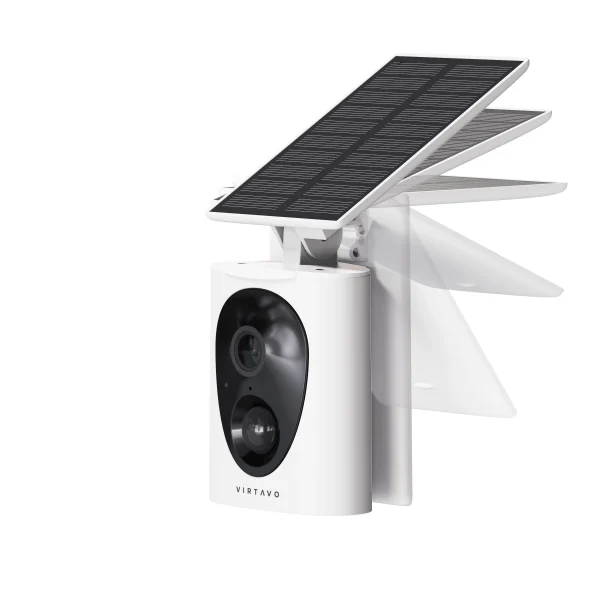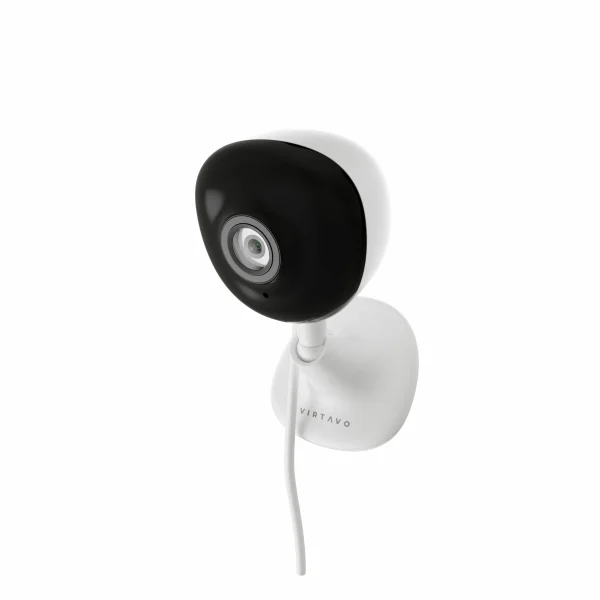Your cart is currently empty!
The feeling of knowing your home and loved ones are safe is priceless. In today’s world, home security cameras are no longer a luxury—they are an essential tool for providing that peace of mind. But with a market flooded with countless options, from simple indoor monitors to complex multi-camera systems, how do you choose the right one?
It can feel overwhelming, but it doesn’t have to be. This guide will walk you through the key features and considerations to help you find the perfect home security cameras that fit your specific needs and budget.
Step 1: Start with the Basics – Indoor vs. Outdoor Cameras
The first and most important question to ask is: where do you need surveillance?
Indoor Security Cameras: These cameras are designed to monitor the activity inside your home. They are perfect for keeping an eye on pets, checking in on your kids after school, or monitoring entryways like the front door or a back patio door from the inside. They are typically smaller, less expensive, and focus on aesthetics to blend in with your home decor.
Outdoor Security Cameras: Built to withstand the elements, outdoor cameras are your first line of defense. They need to be weather-resistant (look for an IP rating of IP65 or higher) and are often more robust in design. They are ideal for monitoring driveways, yards, and the perimeter of your property to deter potential intruders before they even reach your door.
Understanding IP Ratings for Outdoor Security Cameras
What is an IP Rating?
IP (Ingress Protection) ratings indicate how well a device resists dust and water. For outdoor cameras, this determines durability in harsh weather.
IP Rating Breakdown
| Code | Protection Level | Suitable For |
|---|---|---|
| IP65 | Dust-tight + Water-resistant (low-pressure jets) | Sheltered outdoor areas (e.g., under eaves) |
| IP66 | Dust-tight + Powerful water jets | Heavy rain, snow, or coastal areas |
| IP67 | Dust-tight + Immersion (up to 1m, 30 mins) | Temporary flooding (e.g., storms) |
| IP68 | Dust-tight + Continuous underwater use | Permanent submersion (e.g., poolside) |
Key Takeaways
- Minimum for Outdoors: Choose IP65+ to withstand rain.
- Harsh Climates: IP66+ is ideal for extreme weather.
- Waterproof ≠ Subproof: Only IP68 cameras survive underwater.
Example: A camera labeled “IP66” is dustproof and handles heavy rain—perfect for most outdoor installations.
Step 2: Key Features That Genuinely Matter
Once you know whether you need indoor or outdoor coverage (or both), it’s time to compare the features that will make the biggest difference in your daily use.
1. Video Resolution (Clarity is King)
A security camera is only as good as the footage it records. Blurry, unrecognizable images are useless.
- 1080p (Full HD): This is the industry standard and provides clear, detailed footage for most situations.
- 2K or 4K (Ultra HD): These higher resolutions offer superior clarity, allowing you to zoom in on details like faces or license plates without the image becoming pixelated. If your budget allows, 2K is a significant and worthwhile upgrade.
2. Field of View
This refers to how wide of an area the camera can see. A wider field of view (e.g., 130° to 180°) means you need fewer cameras to cover a large space like a backyard or an open-plan living room. For cameras that don’t have a wide view, look for pan and tilt features, which allow you to remotely move the lens to see different areas.
3. Night Vision
Your home needs protection 24/7, not just during the day. There are two main types of night vision:
- Infrared (IR) Night Vision: This is the standard black-and-white video you see in low-light conditions. It’s effective and reliable.
- Color Night Vision: A more advanced feature that uses ambient light or a small, built-in spotlight to record in full color at night. This can provide crucial details, such as the color of a person’s clothing or a vehicle.
4. Power Source: Wired vs. Wireless
- Wired: These cameras plug into a power outlet. They offer a constant, reliable power supply but can be more complex to install, sometimes requiring you to drill through walls.
- Wire-Free (Battery-Powered): Incredibly easy to install, these cameras run on rechargeable batteries. They offer maximum flexibility but require you to recharge them periodically (every few months, depending on usage). This is a top consideration for many buyers, as a recent consumer survey highlighted ease of installation as a primary factor in purchasing decisions for home security cameras.
5. Video Storage: Cloud vs. Local
Where will your recorded footage be saved?
- Cloud Storage: Your videos are automatically uploaded to a secure server. You can access them from anywhere via a mobile app, but this service usually requires a monthly subscription fee.
- Local Storage: Footage is saved to a physical device, like a microSD card inside the camera or a separate base station. The main benefit is that there are no monthly fees, and you have physical control over your data.
Step 3: Smart Features for a Modern Home
Modern home security cameras are much more than just recording devices. Smart features are what turn a good camera into a great one.
- Smart Motion Detection & Alerts: Basic motion detection will alert you to every swaying tree branch. Look for cameras with AI-powered detection that can distinguish between people, animals, vehicles, and even packages. This drastically reduces false alarms.
- Two-Way Audio: A built-in microphone and speaker allow you to listen and talk through the camera. You can greet a visitor, instruct a delivery driver, or warn an intruder that they are being recorded.
- Smart Home Integration: If you use a smart home ecosystem, check if the camera integrates with Amazon Alexa, Google Assistant, or Apple HomeKit. This allows you to use voice commands like, “Alexa, show me the front door camera.”
The Growing Demand for Smarter Security
The market reflects a clear trend: consumers want more intelligent and proactive security. A report from Grand View Research projects the global home security cameras market to expand significantly, driven by the integration of AI and IoT (Internet of Things) technology. This means that investing in a camera with smart features isn’t just a gimmick—it’s the future of home security.
Conclusion: Finding Your Perfect Match
Choosing the best home security cameras for your family is a personal decision. Start by assessing your property’s vulnerable points, then decide on the core features that matter most to you—like video clarity, power source, and storage.
By focusing on your unique needs rather than just the latest tech, you can confidently select a camera or system that provides true security and, more importantly, lasting peace of mind.
Pick for You
-
Best Solar Powered Security Cameras (2K HD & Wireless) | VIRTAVO
Original price was: $59.99.$39.99Current price is: $39.99. -
VIRTAVO EggSentry Dual Lens Security Camera | 360° View Indoor Cam, Pet Camera & Baby Monitor with AI Motion Tracking
Original price was: $49.99.$29.99Current price is: $29.99. -
VIRTAVO KolaWise 2K Magnetic Security Camera Indoor | Wired Pet Cam, Baby Monitor, Nanny Cam with No-Drill Mount
$59.99 -
VIRTAVO MantisWatch Triple Lens PTZ Security Camera Outdoor | 2K Wireless WiFi, 360° View with AI Auto Tracking
$199.99






